Emily Lakdawalla • Sep 06, 2016
Philae spotted on the surface of comet Churyumov-Gerasimenko
Ever since its November 12, 2014 landing on the surface of comet Churyumov-Gerasmienko, the Philae lander has been elusive. It went silent just three days later and never returned any more science data, though it made brief contact with the orbiter last summer. Now, just a month until the planned end of the Rosetta mission, the orbiter has finally located the lander in a stunning high-resolution view of the surface. This OSIRIS Narrow-Angle Camera image was taken on September 2, 2016 from an altitude of only 2700 meters. See if you can spot the lander in it, but if you can't, don't worry, I'll show you below.
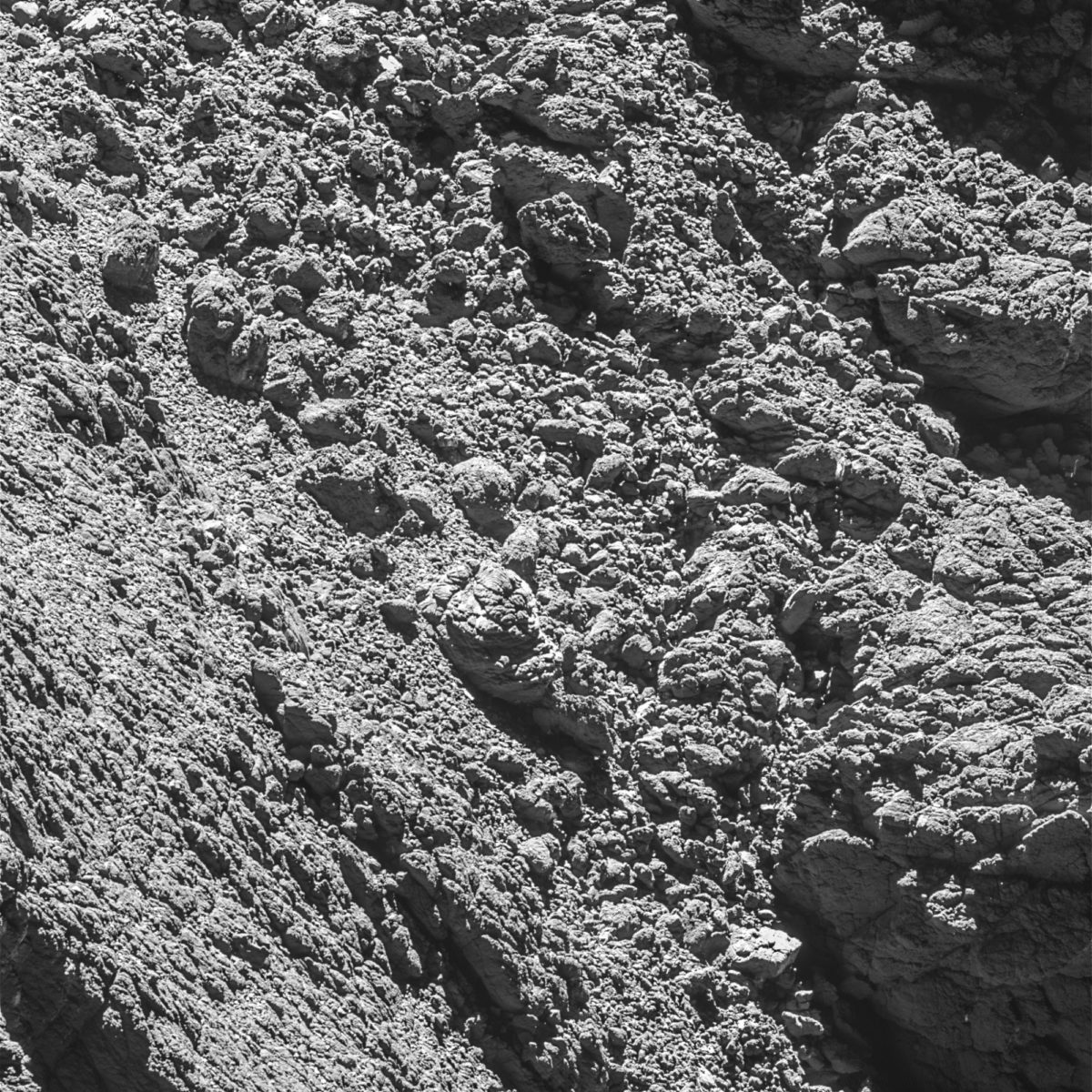
Here is an animated guide to locating the lander:
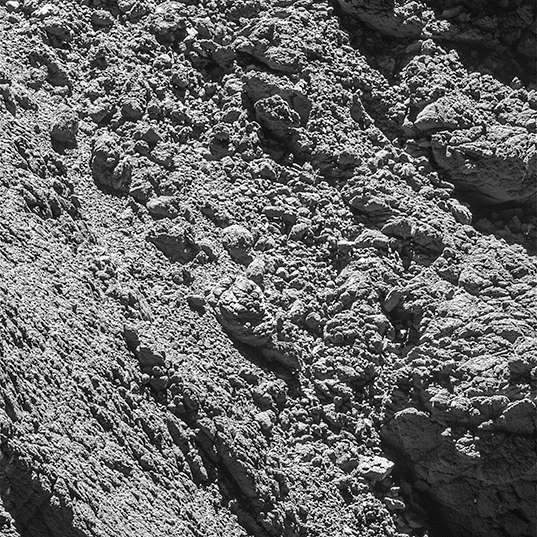
And here's an enlarged and rotated view of the lander, to compare to an artwork:

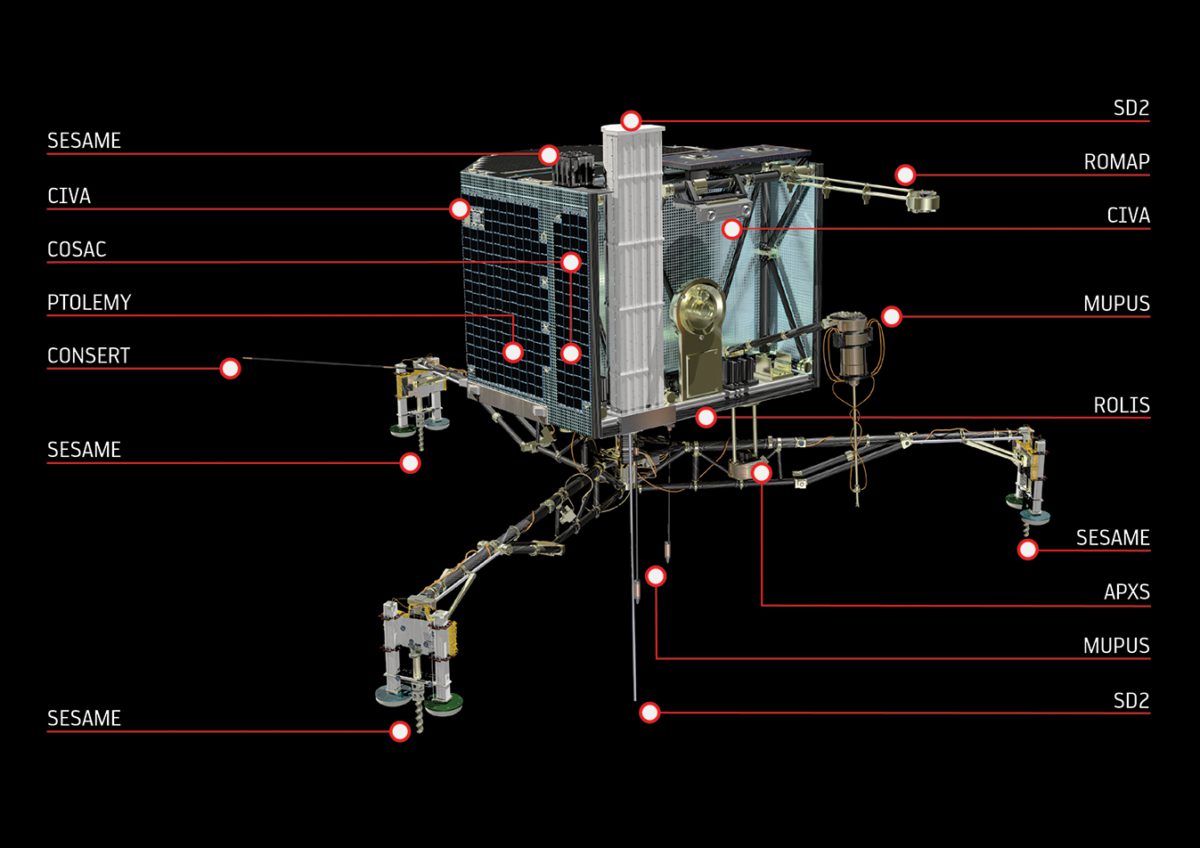
APXS: Alpha Particle X-ray Spectrometer, for studying elemental composition
CIVA: Comet Nucleus Infrared and Visible Analyser, six black-and-white cameras for panoramic imaging
CONSERT: COmet Nucleus Sounding Experiment by Radiowave Transmission, for studying comet interior
COSAC: The COmetary SAmpling and Composition, an evolved gas analyzer for identifying organic molecules
Ptolemy: an evolved gas analyzer for measuring isotopes of light elements
MUPUS: MUlti-PUrpose Sensors for Surface and Sub-Surface Science, for studying comet physical properties
ROLIS: Rosetta Lander Imaging System, will provide context images of landing site
ROMAP: Rosetta Lander Magnetometer and Plasma Monitor, for studying the magnetic field and plasma environment of the comet
SD2: Sampling, drilling and distribution subsystem, can drill to 23 centimeters depth
SESAME: Surface Electric Sounding and Acoustic Monitoring Experiment, for studying comet physical propertiesImage: ESA / ATG medialab
I'm especially tickled by the fact that there is a single bright pixel that clearly identifies the location of one of the CIVA cameras, the one that took the so-called "self-portraits" of Rosetta while Philae was still attached to the orbiter.
The image of Philae is all kinds of cool from a historical perspective -- documentation of one of our few extraterrestrial landing sites. But it's equally important for science. The small amount of science data that Philae took on the comet -- especially its CONSERT radio sounding data -- can now be placed in much more precise geographic context.
The amazing image was made possible by Rosetta's decreasing orbit altitude, a precursor to its eventual landing. Several of the recent OSIRIS Images of the Day have been taken from distances of less than 5 kilometers from the center of the comet, so from altitudes of less than 3 kilometers. I'm just fascinated by the small-scale surface processes on evidence here. The comet appears to be made of some kind of massive material, held together strongly enough to hold together, at least in places, despite pervasive fracturing; but the fracturing has taken its toll, creating angular boulders that litter the surface and which are themselves slowly breaking apart into finer and finer gravels. So cool.
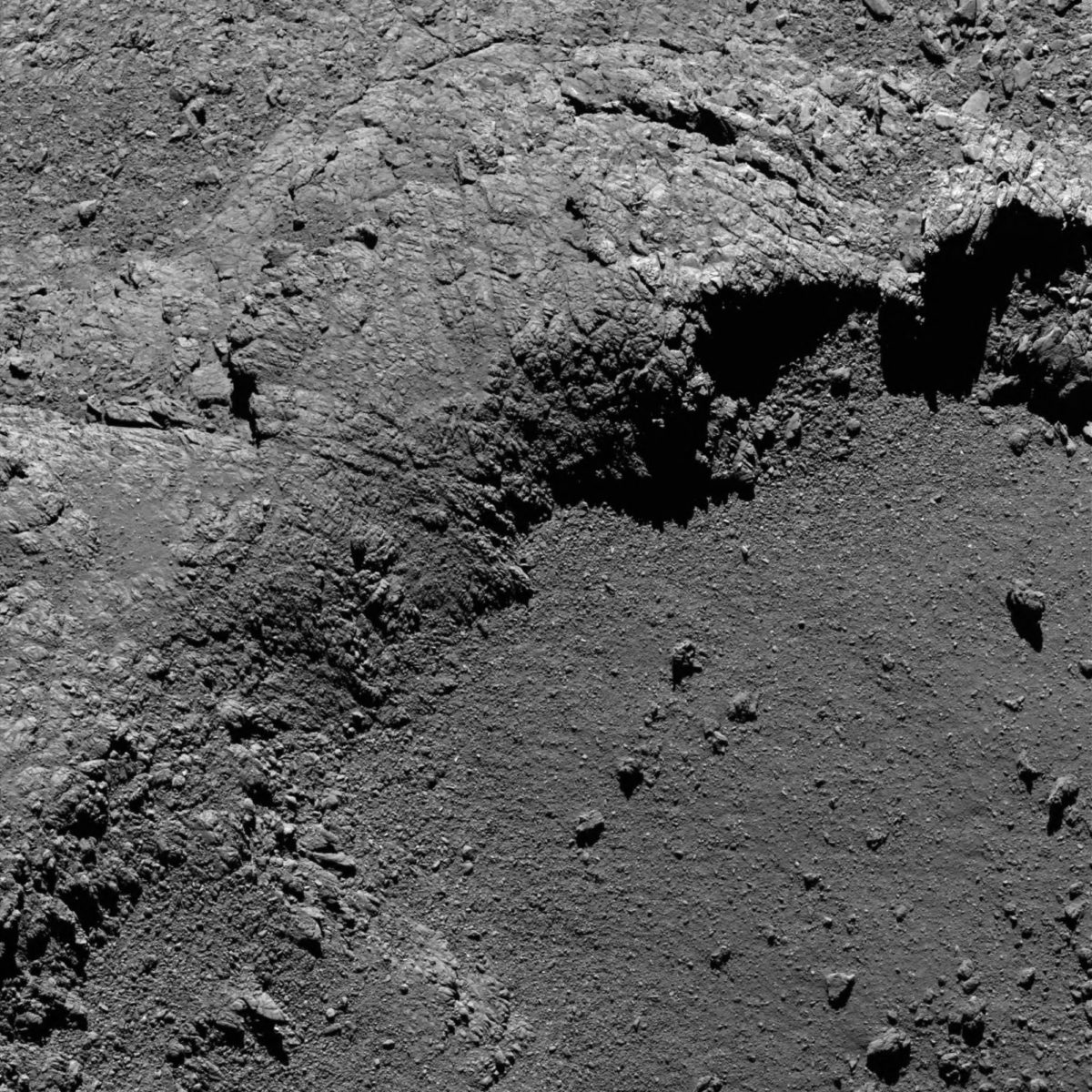
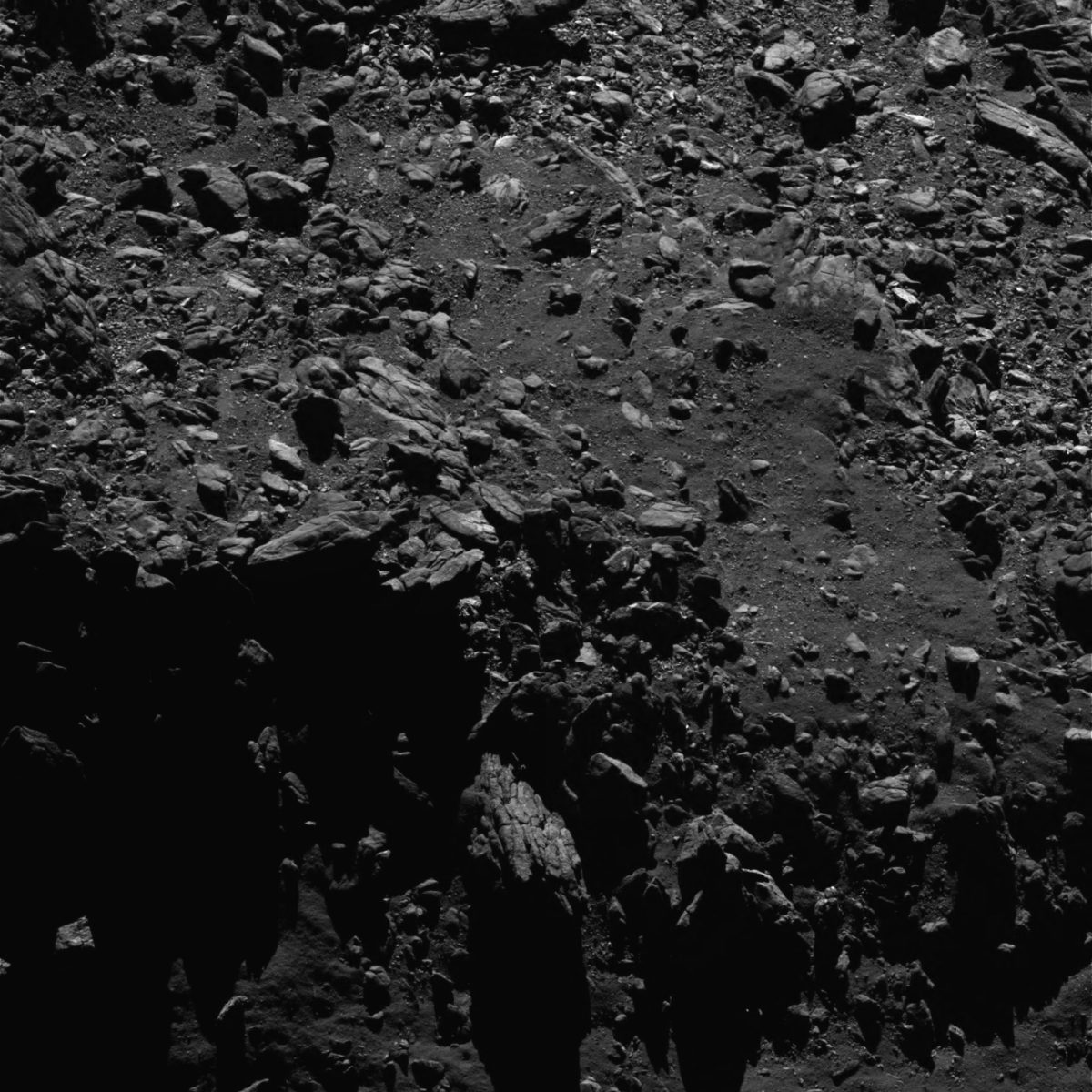
Let’s Go Beyond The Horizon
Every success in space exploration is the result of the community of space enthusiasts, like you, who believe it is important. You can help usher in the next great era of space exploration with your gift today.
Donate Today

 Explore Worlds
Explore Worlds Find Life
Find Life Defend Earth
Defend Earth


